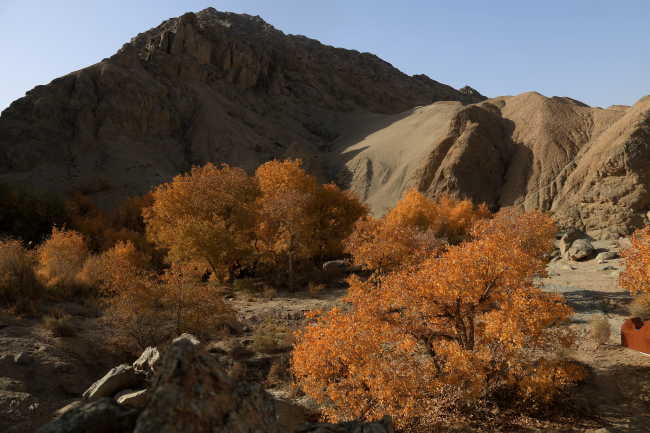Xuanquanzhi site ablaze in autumnal colors

Populous euphratica trees bring bright autumnal hues to the Xuanquanzhi ruins in Dunhuang, Gansu province. [Photo provided by Dunhuang city]
Autumn is the best time to explore the Xuanquanzhi ruins of the Western Han Dynasty (206 BC-24 BC) in Dunhuang, Gansu province.
Populous euphratica trees turn bright yellow and orange, making for splendid views amid the blue sky.
The world cultural heritage site is close to a pass of Sanwei Mountain, and it is 1,500 meters from Xuanquan Spring, named after the water flowing down from high platforms and entering a pool.
It was once a post office to deliver mail and welcome messengers, officials, government inspectors and foreign guests. Covering 22,500 square meters, the site is composed of a fortress, a stable, a domestic waste area and ancillary buildings.
More than 70,000 relics, including bamboo slips, silk books, paper documents, crops and livestock bones, have been unearthed here in an archaeological excavation area of 4,675 square meters.
The site provides important materials to the study of the architectural planning and postal system of the Han Dynasty. In 2001, it was listed as a national key cultural relic protection site by the State Council. In 2014, it was included in the World Cultural Heritage List by the United Nations Educational, Scientific and Cultural Organization.





 Print
Print Mail
Mail
